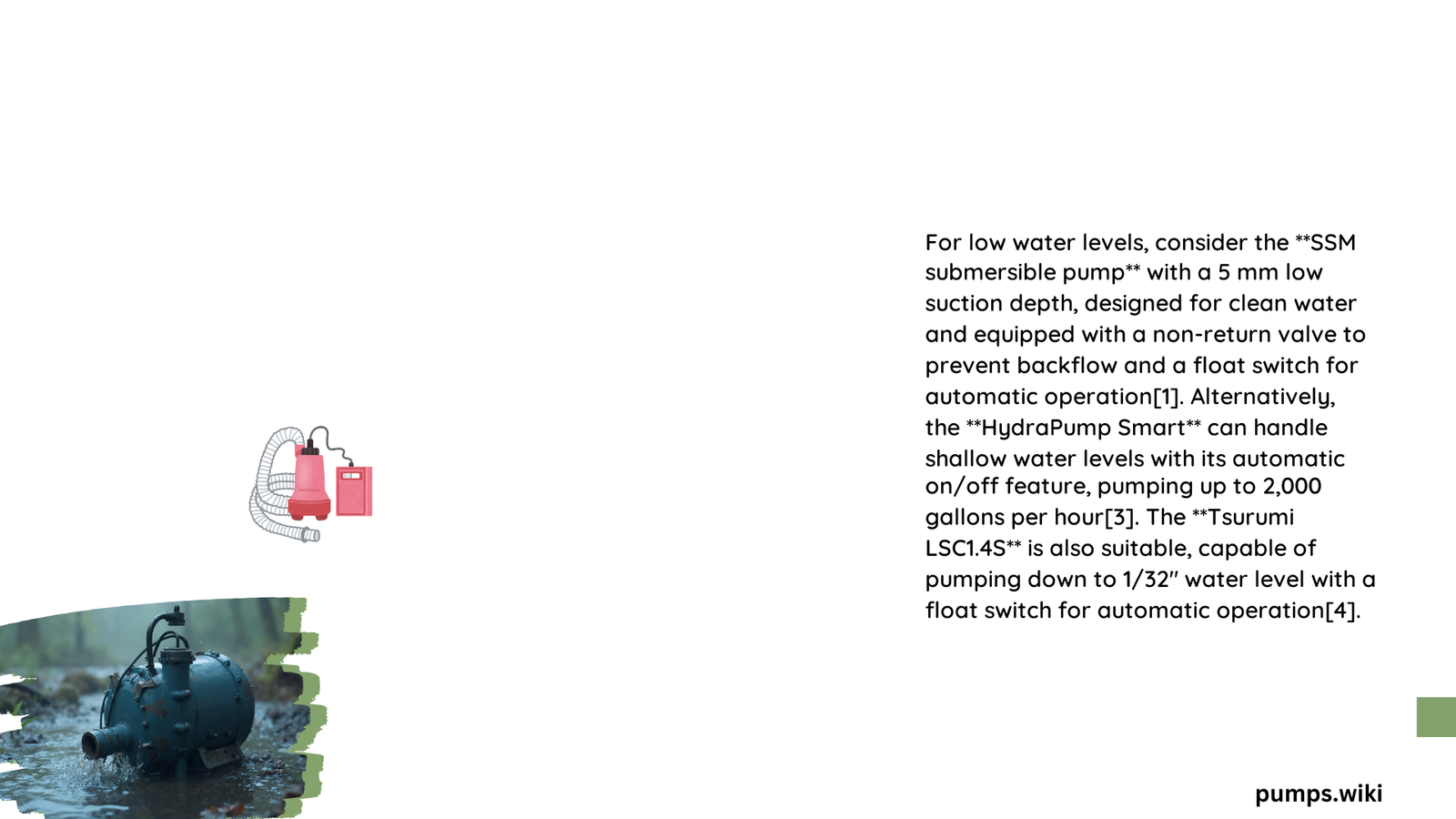Homeowners facing low water table challenges require specialized sump pump solutions that efficiently manage moisture without overwhelming their drainage systems. A strategic approach involving carefully selected submersible pumps, precise installation techniques, and regular maintenance can effectively mitigate potential water-related risks in residential environments. Understanding the nuanced requirements of low water level scenarios is crucial for implementing robust water management strategies.
What Makes Sump Pumps Critical for Low Water Environments?
Low water level environments present unique challenges for water management. Unlike high water table scenarios, these settings demand precision-engineered sump pumps capable of operating efficiently with minimal water accumulation. The right sump pump ensures consistent moisture control, prevents potential structural damage, and maintains a dry, healthy basement environment.
Key Considerations for Low Water Level Sump Pumps
| Feature | Importance | Recommended Specification |
|---|---|---|
| Horsepower | Critical | 1/3 to 1/2 HP |
| Flow Rate | Essential | 40-76 Gallons Per Minute |
| Vertical Lift | Crucial | 7-15 feet |
| Construction Material | Significant | Cast Iron or Thermoplastic |
How to Select the Perfect Sump Pump?

When choosing a sump pump for low water levels, consider these primary factors:
- Performance Metrics
- Minimum flow rate of 40 GPM
- Vertical lift between 7-15 feet
-
Compact design for restricted spaces
-
Durability Considerations
- Corrosion-resistant materials
- Robust motor construction
- Reliable float switch mechanism
Top Recommended Sump Pumps
Zoeller at Home 1/3 HP Cast Iron Submersible Sump Pump
- Specifications:
- Horsepower: 1/3 HP
- Flow Rate: 42 gallons per minute
- Vertical Lift: 7-10 feet
- Price Range: $200-$300
- Key Features:
- Electromagnetic float switch
- Non-clogging vortex impeller
- Two-year limited warranty
Wayne 58321-WYN3 Submersible Sump Pump
- Specifications:
- Horsepower: 1/2 HP
- Flow Rate: 76.67 gallons per minute
- Vertical Lift: 10-15 feet
- Price Range: $250-$400
- Key Features:
- Vertical float switch
- Automatic operation
- Top suction design
- Five-year warranty
What Installation Techniques Ensure Optimal Performance?
Step-by-Step Installation Process
- Prepare Sump Pit
- Clean thoroughly
- Ensure proper depth and dimensions
-
Check drainage capabilities
-
Pump Placement
- Level positioning
- Secure mounting
-
Proper discharge pipe connection
-
Electrical Considerations
- Use dedicated circuit
- Install ground fault circuit interrupter (GFCI)
- Ensure proper voltage compatibility
How to Maintain Your Sump Pump?
Maintenance Checklist
- Monthly Tasks
- Inspect sump pit
- Test float switch
-
Check for debris
-
Quarterly Responsibilities
- Clean pump components
- Verify discharge pipe functionality
-
Lubricate moving parts
-
Annual Professional Evaluation
- Comprehensive system assessment
- Performance diagnostics
- Potential component replacement
Expert Recommendations
Professional water management experts consistently emphasize the importance of:
– Regular maintenance
– Proactive system monitoring
– Investing in high-quality equipment
– Understanding specific environmental conditions
Cost-Effective Strategies
- Choose pumps with extended warranties
- Implement preventative maintenance
- Consider backup power solutions
- Invest in quality initial installation
Conclusion
Selecting the right sump pump for low water levels requires careful consideration of performance, durability, and specific environmental factors. By understanding your unique requirements and following expert guidelines, you can effectively manage moisture and protect your property.
